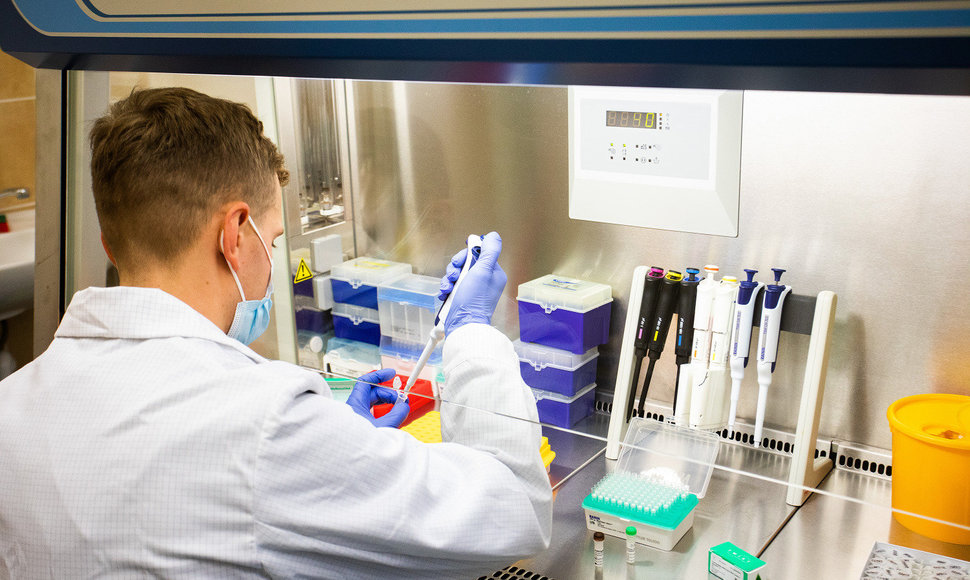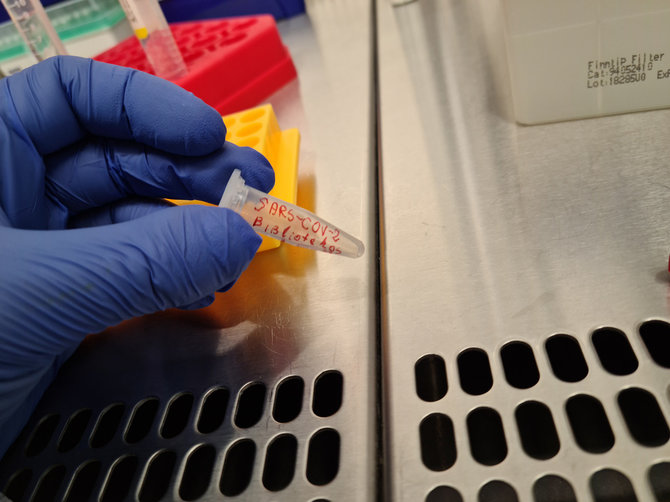Christmas was a period of hard work for the scientists in Kaunas even during the holiday period, and researchers at LSMU in cooperation with specialists at the Kaunas Clinics continued studies of the coronavirus’ gene sequence.
“Today, we have already researched over 200 coronavirus genomes, and we have evaluated virus variants that spread in Lithuania in spring, autumn and also those in circulation right now. This is the broadest scope of such research in the Baltic States, and we will share the results of the latest research on the international database GISAID,” LSMU prorector for science professor Vaiva Lesauskaitė stated.
According to the professor, it was possible to achieve such impressive results thanks to an accumulation of COVID-19 genome research experience, as well as the modern laboratory equipment at LSMU and the Kaunas Clinics.
“Very important and necessary work has been completed, and the scientists have managed to study sixty SARS-CoV-2 samples gathered in November and December in Lithuania, most of which are completely new samples taken from patients as recently as December 23rd,” noted Professor Astra Vitkauskienė head of the Kaunas Clinics’ Laboratorial Medicine Clinic.
The scientists point out that currently, natural processes are underway: the coronavirus is gradually changing, and new permutations of the virus are gradually overshadowing their predecessors. Intensified travel during summer could have had a significant impact on the virus’ mutations and spread.
According to project researcher, LSMU doctorate candidate Lukas Žemaitis, the highly concerning British mutation of the virus could have reached Lithuania already, but in this study, by employing random sampling, the aim was to find out what genetic variations of SARS-CoV-2 have proliferated in Lithuania.
The B.1.1.7 line of the virus stemming from the UK was not found in any of the samples studied by the researchers, and they say that it is likely that this type of the virus has not proliferated widely in Lithuania, however, does not mean that it doesn’t exist in the country. In order to discover this permutation of the virus, samples would have to be selected based on specific PGR markers, or by testing those arriving from the UK. So far, the scientists have not been purposefully seeking out this type of the virus.
“During previous gene sequencing, we found direct links of the coronavirus with the COVID-19 virus that first emerged in Wuhan. The autumn wave was more reflective of European trends, but the newest research shows that at the moment, the virus type from Spain (B.1.177 line) which spread this summer is predominant. It was found across various regions in Europe this autumn and proliferated widely in the UK, with the spread tied to international travel. We first discovered this type of virus back in September, and it was then found in eleven of almost eighty samples tested. At the moment, it has become predominant and is found in more than 90 per cent of samples tested,” Lukas Žemaitis said.
The scientists emphasise that it is necessary to continue studying the virus’ gene sequence, as only this way can we find out the real coronavirus situation in Lithuania. According to the researchers, when performing disease diagnostics, it is also necessary to know what permutations of the virus are presently in circulation.
Several countries have assembled special consortiums for the study of the SARS-CoV-2 genome, which allows for prompt notice of changes in the virus. At the moment in Lithuania, SARS-CoV-2 genome research is performed only through the initiative of scientists, and gene sequencing is performed through the LSMU scientists receiving financing from the Research Council of Lithuania.













